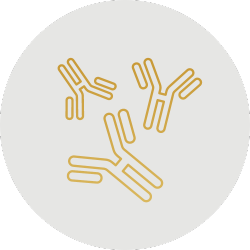Maximizing yield and stability in antibody production is crucial for ensuring the effectiveness and reliability of antibodies in research and therapeutic applications. To achieve this, various strategies are employed across different stages of production, from expression system optimization to purification techniques.
1. Expression System Optimization
Expression systems like CHO (Chinese Hamster Ovary) and HEK293 (Human Embryonic Kidney) cells are widely used due to their ability to produce high-quality antibodies. Enhancing expression is possible through techniques like codon optimization, where DNA sequences are modified to improve translation efficiency in the chosen host system. This ensures higher yields of the desired antibody.
2. Culture Conditions
Controlling the culture environment significantly affects both yield and stability. Factors such as pH, temperature, oxygen levels, and nutrient supply (including amino acids and growth factors) are carefully monitored and adjusted. For example, lowering the temperature during the late stages of cell culture can enhance protein folding and reduce stress on the cells, leading to more stable antibody production.
3. Molecular Engineering
Genetic and protein engineering techniques are used to improve antibody properties. This includes modifying the antibody’s Fc region to enhance stability, glycosylation patterns, or reduce degradation. Site-directed mutagenesis can also prevent aggregation, a common issue that leads to instability.
4. Purification and Downstream Processing
Post-production purification is critical to ensure stability and purity. Techniques such as Protein A chromatography or ion-exchange chromatography are employed to remove impurities. Aggregation-prone antibodies can be stabilized by adding excipients or using buffer systems designed to maintain their structural integrity during storage.
5. Formulation Optimization
Once antibodies are purified, formulation plays a key role in their long-term stability. Factors such as pH, salt concentration, and the presence of stabilizing agents (e.g., sugars or polyols) can prolong antibody shelf life and maintain bioactivity. Lyophilization (freeze-drying) is another method to enhance stability for storage and transport.
Conclusion
By combining these strategies, researchers and manufacturers can optimize both the yield and stability of antibodies, resulting in more reliable products for therapeutic and diagnostic use. Continuous advancements in molecular biology and bioprocessing further enable fine-tuning at each stage, ensuring high-quality and effective antibodies.
